jzp-art
206 posts
Don't wanna be here? Send us removal request.
Text

Bros gotta lock in…
(Original post @/handji_kyle on Twitter)
2K notes
·
View notes
Text
grow 249
It's always fun to see others grow, especially more fun when you see it up close in person!!!

21 notes
·
View notes
Text
grow 184
When the call for Heroes goes out. Will you answer it, join others like you today. Register at the Hero Tower Academy!!

#jzpart#growth#size growth#size transforation#giant#giant growth#giant male#superhero#height growth#body growth#giant/tiny
20 notes
·
View notes
Text
So about the Battle Subway Trains

Hi, I love trains! And the Trains in Unova have a surprising amount of detail? And nobody talks about it? And if I don't talk about it I will explode!?!!!
So despite Unova being inspired by New York you'd think the Battle Subway Trains would be based on The New York Subway Trains? However they look like they are more based on Japanese Railway Trains!
I'd like to preface before going into this that despite talking a lot about the Japanese Railway, I am not Japanese, while I did my best to research as best I can, some stuff may fly over my head, I also used an online translator for some information so it might not be 100% accurate.
Alrighty lets get into this! This is mainly for fun and its going to be under the Read More because it is verrrrrrrrry long, I hope that you enjoy!
If you aren't aware, each train in the Battle Subway has lore! All the lore comes from this Worker NPC on the bridge in Anville Town. Depending on the day, a different train will show up on the turntable, and he'll give you a little dialogue for that train! This dialogue is what I'll be mainly analyzing :]

Single and Anville Town Trains:


"This is a Single Train! It's the oldest train in the Battle Subway. It's for a loop line to go around the Unova region! Do you know Tubeline Bridge? The train that runs on it is this Single Train."
"As you know, this is a local train to Anville Town! Isn't it just so cute? This one is a little slow and heavy. When it runs, the whole train sways. The train car is the same model as a Single Train. Because it is an old train car, I hear the maintenance is hard, but it's the one I always ride, because I loved it as a kid!"
So! The Single and Anville Town Trains are the same model of train, you can actually see this in their designs where they both share the same face but they differ in the livery. (Livery is a term referring to the train's decor/color, the color is often associated with a particular company or in this case a particular train line.) I'm going to use this fact to assume that if one train has one feature, then it's likely that the other train also has that same feature. Such as how the description of the Anville Town Train says it sways as it runs, if that is the case then the Single Train also probably sways. (which sounds kind of awful to battle on, unless you have good train legs I suppose X_X)
It is stated that the Single Train is the oldest in the Battle Subway. I believe though, that it means the oldest train that is currently running in the Battle Subway. As there is another train that seems much older and no longer running, but I'll get to that train much much later.
Older trains are indeed harder to maintain, and expensive too. This is because the older the equipment, the harder it is to get its parts as they become more obsolete. Though I will say this, trains can last a long time! The average service life of a train is about 30-50 years, it really varies from train to train. These trains would most likely be on the older side.
There is a slight possibility that it has been continued to be maintained past it service life. Given how fond the Worker NPC talks about the train, it might have high sentimental value. Therefore if it is past its service life, it has not been scrapped or recycled yet because of it. I doubt this is the case though, usually it is never worth the maintenance cost (especially for regular operation.)
Like the description says, you can see the Single Train running on the Tubeline Bridge, here's a video of it! Apologies for the way I am recording this, I don't exactly have a capture card, but I wanted to show you guys regardless
You can see how fast the train is going as it passes below you! At least the just Singles Train anyways, seems to me like it's going about 20-30mph? I tried doing math to find the exact speed but that's difficult for several reasons (no idea how large a "tile" in Pokemon really is and objects in the overworld are not very accurate in size so I can't exactly do any comparisons. The perspective of the camera also makes it tricky.) Given how the Anville Train is described as "slow and heavy", I would hazard a guess to say that the other trains of the Battle Subway may run faster than this.
You can also see that each train is made up of 7 cars as it passes below you if you slow down the footage. Which is not surprising, you have to win 7 battles in a row to complete a "set" where you are then dropped off at a rest stop. I believe the Battle Subway trains to be electrical multiple units (EMUs) so it would probably make them 7-car sets.
It also looks like the Singles Line is very busy with the trains only being seconds apart! Now I know this is more a visual thing so the environment would be interesting to look at, but I'd like to think it indicates that the Battle Subway/Singles Line is very popular! (and very well organized!)
As for Real life train inspirations I think perhaps the Tobu 10030 series?
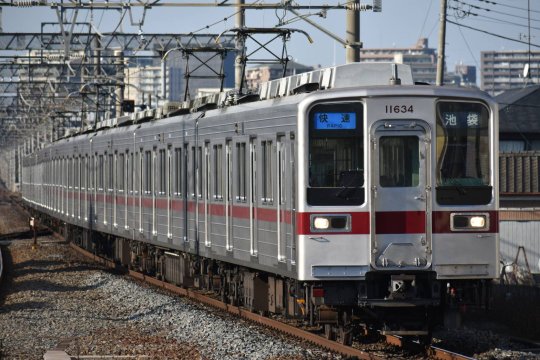
The Tobu 10030 is a version of the Tobu 10000 series with some minor changes, such as the design of the face and using a bolsterless bogie. (Bogie is a part of the train that refers to a frame that holds sets of wheels as well as the suspension, breaks, etc. in which the body of the train car rests upon.)(A bolster is a part that connects the side frames of the bogie and the underside of the car's central pivot point.)(A bolsterless bogie is a bogie type that doesn't have a bolster). The front of the train is covered in fiber reinforced plastic and the outer panels are "bead molded" (which... I have no clue what that means...) This series has been going under renovations since 2010.
Double Train:

"This car is a Double Train! This is a mass-produced car from a decade ago! Compared to a Single Train, the number of parts was reduced so it could be built for a lower cost. The number of parts influences the budget and construction time. The streamlined and beautiful design of the Double Train is still valued today."
So the Double Train is at least 10 years old! (That's what decade means!) Honestly though, I think the Double Train might be older than 10, in Japanese the description just says that it is a "mass-produced train from a long time ago" and doesn't mention a number... Another reason is that in the Multi Train description, it mentions that it is a test model for future trains that will replace the Double Trains. Which means perhaps that the Double Trains may be reaching near the end of its service life, which again average 30-50 years. It could be a possibility that this train may have a shorter service life than usual, who knows. This all speculation really.
As for lowering the amount of parts, from what I found it makes the train lighter. It would also probably lower the cost as well like the description says (trains are really really expensive to build! EMUs can cost $2mil-$10mil per car!)
It also mentions that it is a mass-produced car! It's a train made with mass production for commercial purposes! I believe it's usually for train lines that are really busy, where they would need a lot of trains? It typically means that there are a lot of them. (All this makes me wonder about train production in the Pokemon World...)
As for Real life inspirations, I think that the Double Train is inspired by the Tokyu 1000 series train.
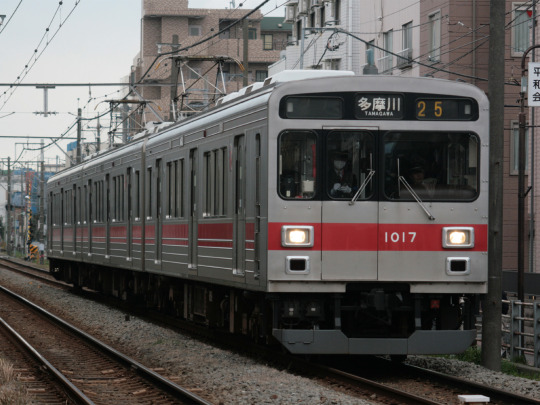
The Tokyu 1000's design and equipment is similar to another train, the Tokyu 9000 series, with improvements such as improved handling and making it easier to do inspection and repair work. As well as reducing the amount of spare parts from the Tokyu 9000.
Multi Train:

"This car is a Multi Train! Few cars of this model were produced. This is a test car to develop future mass-produced cars that will replace the old Double Trains. The technology born during the creation of this train car made the Super Single Train and Super Double Train possible!"
The multi train is a test/prototype train! A little surprised that an entire line is running off a few prototypes. Like the description says, not many are produced as the purpose of a prototype is to test features and improve upon them if needed before they are put into mass production. Given that it says the technology from this train was the reason the Super Single and Super Double Train was made possible. I'm thinking it was most likely testing some eco friendly features? As it is the Super Single and Super Double Train's main feature.
Perhaps them using a model with so few trains means that the Multi line isn't that busy/popular? (Surprising then the train platform is not swarming with more train photographers haha!)
As for real life inspirations, while the livery may not be the same I think it could be the Keisei 3000 (2nd Generation.)
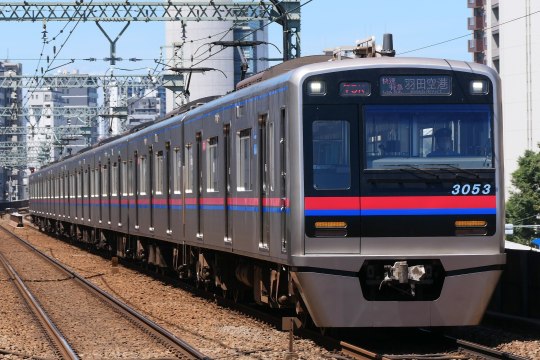
The Keisei 3000's body is made of lightweight stainless steel and the passenger doors have a paper honeycomb structure. When they were designing this train, they wanted it to be both environmentally (energy saving) and customer friendly (being accessible to elderly and those with disabilities.)
Super Single and Super Double Trains:


"This Super Single Train is a new mass-produced car! It's an environmentally friendly train, because they revised all the parts to drastically reduce power consumption! Newer trains have to be built in a way that's both functional and environmentally friendly. Compared to the past, they've improved significantly."
"This Super Double Train is a new mass-produced car! Such a streamlined and refined design! Beauty and utility working together! That kind of beautility is unique to mass-produced train cars! It uses the same train car as a Super Single Train. The only difference is the appearance. It is a superb train car that will go down in the history of the Battle Subway!"
The Super Single and Super Double Trains are the same model. Honestly the description of these trains doesn't give me a lot of information besides the fact that these trains are eco friendly. So I'll talk about what trains do to make themselves (even more) eco friendly!
They are stated to be eco friendly by reducing power consumption. I think it could be referring to a "VVVF inverter control" (it stands for variable voltage variable frequency. In English its mainly called the VFD or variable frequency drive.) A VVVF is a type of system for an AC motor that can reduce energy consumption! (There are two types of electrical current, DC or Direct Current and AC or Alternate Current. An AC motor is a motor that is driven by AC electricity.) It is important on energy saving trains! I won't get too much into how it works, but essentially it controls the AC motor's rotational speed by controlling the frequency. By controlling these, it can control the speed and acceleration of a train. You'll find that a VVVF is often paired with a three phase motor (I will not go into that...) Let's just say that these systems are very efficient at using power and help save energy.
Really, reducing power consumption usually means being more efficient at using power. Like using LEDs, using better insulation to retain cooling or heating, and generally using parts that use less electricity. It could be that the train is lighter in weight too (lighter vehicles use less power.)
Both of these Super Trains are mass produced! Which tells me that there are a lot of Super Single and Super Double trains! Its lines are probably busy.
As for real life inspirations, it is very much inspired by the E233-2000 series train
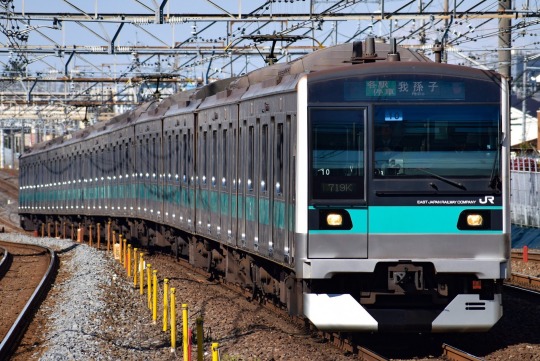
The E233-2000 is a little bit of an oddball in the E233 family exterior design wise. Its design was inspired by the Tokyu 5000 series. Its basic running equipment is the same as the E233 trains before it though.
I think it is a bit of a stretch, but I'll mention it anyways. The E233 (which the E233-2000 is a subsection of) is a train that has won the Laurel Award in 2007. The Laurel Award is an award given to trains by the Japan Railway Friends Association for trains with an excellence in technology and design (specifically geared towards commuter trains.) It could be what all the "beautility" comments could be referencing to? They do look verrry different though, and the E233-2000 came after the award was given...
Super Multi Train:

"This train car is a Super Multi Train! This is the latest train car! Improved acceleration and deceleration! Automated train-car controls! It's full of cutting-edge technologies. Also, a regeneration brake system, a car-body tilting system, a whatchamacallit system, a thingamabob system... I don't remember all the details, but it's just a big festival of all the latest technology!"
Ohhoho! The Super Multi Train description is a goldmine of details! This train is the whole reason I wanted to make this post! Let's run through its features!
Improved acceleration and deceleration means that it can run between stops faster, allowing for quicker operation time.
Automated train-car controls or ATC is a safety system on trains that prevents trains from going over a certain speed! If the train goes over the maximum speed permitted then the ATC will pull the brakes automatically to reduce the speed and release the brakes when it is below maximum speed. It also displays the maximum speed to the driver. It is an incredibly important safety system!! From what I understand, the term ATC is very common in Japan, in other countries the ATC would simply be a part of cab signaling (it is a safety system mainly for the driver and train crew, it tells them track status and condition information) and train protection technologies. ATC is installed on all Shinkansen trains, it is also installed in some subways and heavily used railways.
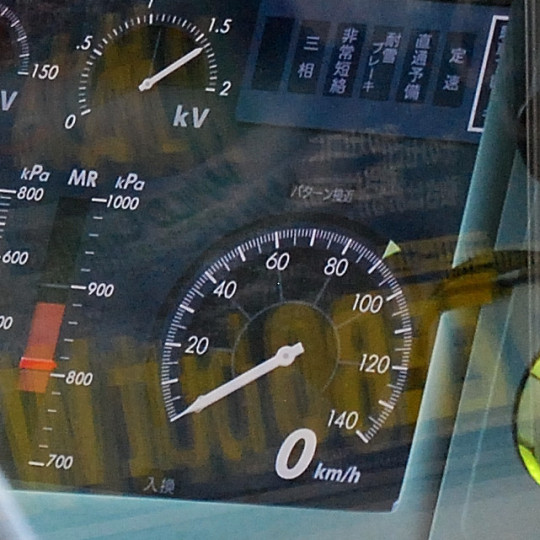
Here's an example of what it looks like! The green triangle there is the (current) maximum speed. There are a lot of different types of ATC systems and this ones a D-ATC (stands for Digital Automatic Train Control) from within an E233! There are a whole lot of different types of ATC, and they can come in many looks! I would show more examples, however, I have hit the image limit on this post... :[
A regenerative brake system is a special type of breaking that allows a train to generate electricity via breaking! The electricity can either be used immediately, stored, or returned back into the line. You might've heard this feature on electric or hybrid cars. It is a common eco friendly feature!
A car-body tilting system is a feature in trains that allows the body of the train car to tilt into a curve! It allows the train to go faster on a track (not needing to slow down on a curve) but the feature is mainly for passenger comfort! When you ride, you don't feel the centrifugal force at all when going around a curve! And it makes the ride so smooth! Here's a short video demonstrating what it looks like:
youtube
There are essentially two major ways to do a car body tilting system. There is active tilting (forced body tilting) or passive tilting (pendulum system). A forced body tilting system uses computers to tilt the train using track data or sensors, telling the train when and how much to tilt. If the calculation is not done correctly, it can leave passengers with motion sickness (An infamous example is the Advanced Passenger Train in the UK). The tilting itself I believe is done via hydraulics. Forced Body Tilting is more popular in European and American trains.
As for passive tilting, the train in the video uses it! (A controlled pendulum train!) It means it uses natural forces to tilt the train car. I'll dive deeper into this type of tilting in the Wi-Fi train section because it actually mentions it's a pendulum train! As to which tilting type the Super Multi train has... it could honestly be either.
(Ah! I forgot to mention this, but tilting trains are especially useful in mountainous regions, where there are a lot of curves.)
In the Japanese version of the Super Multi description, it also mentions that it has a "earthquake warning system" and a "tornado monitoring system".
An earthquake warning system is not something fully installed into the train, rather it's mainly a set of sensors installed along the track, coast, and major inland areas. For passenger rail, if any signs of an earthquake are detected, it will alert any trains in the affected area and drivers are required to apply their emergency brakes. For shinkansen trains it will cut off power to the affected area which will automatically activate the emergency brakes.
Well, I found something close to a tornado warning system. There is a "gust warning system" where sensors measure wind speed and to predict where strong gusts of wind would go. Again, it's not a system that is installed within the train. From what I could tell, they would restrict travel speed during strong winds. If wind speeds are too high, then they would shut down the lines. (I suppose would be very useful, especially when there's some legendaries that cause powerful storms roaming around.)
In the Japanese version of the text, it also states that the Super Multi Train is also a test train. Which again means there's also not a lot of this train. It also states that some of it's features are unnecessary due to it being a test train lol
In the description all these features are stated as "cutting edge" and "a festival of all the latest technology" when these features are not all that new? And Regenerative breaking seems to be pretty common? (Every irl train I have shown thus far all have it.) Eh, I don't think it's that big of a deal. They are just fictional trains after all.
I originally thought the train looked like an Eizan Railway Deo 800 series, but thanks to the leaks, it looks like that the JR East 205-500 was used as a base to design the Super Multi Train? With probably heavy modification to the final design. (While I don't condone the method that these leaks were obtained, curiosity did get the better of me. This is the only train that I ID-ed this way.)

This Train was exclusive to the Sagami Line, though it ended operation in 2022 and every one of these trains have been scrapped. The blue color I believe is an homage to the Sagami River that runs along the line. The Train used a semi automatic door system for its passenger doors. Which means that rather than the conductor opening and closing the doors, the passengers would press a button to open the door when the train has stopped.
Wi-Fi Train:

"This train car is a Wi-Fi Train! It is the fastest long-distance high-speed train in the Battle Subway! This is called a pendulum car. Its body tilts while going around curves, so it can run without slowing down! Faster! Farther! Our engineers' spirits are infused in it!"
A pendulum car is a very specific term!!! Like I mentioned in the Super Mutli Train section it is a type of car body tilting. There are multiple types of Pendulum systems, There is Natural Pendulum, Controlled Pendulum, Air Spring (also called Simple Pendulum), and Hybrid.
Natural Pendulum is just using the centrifugal force of when it goes around a curve to tilt the train. This type was known to cause motion sickness in riders because when it straightened out, the car would "lag" or wobble. Sometimes the force was not enough to tilt the train and this would also cause passenger discomfort. These issues were fixed later with a controlled pendulum, where there would be a degree of control to the tilting. Using mechanisms similar to forced body tilting, it would prevent wobble and ease the tilt. The air spring method, as suggests in the name, uses air springs to help with tilting. It is similar to the controlled pendulum, though it tilts less than it (controlled pendulum can tilt 6 degrees and air springs can only tilt 2 degrees). Air springs are cheaper to build though and still are able to make the train go faster. Hybrid is the combination of controlled pendulum and air springs, allowing for an 8 degree tilt.
I hope the Wi-Fi train is not a natural pendulum? You're telling me you have to battle on that and you might get motion sickness?? Though it sounds like it might be more high tech so it is most likely the other types... Hopefully...
It also states that this train is the "fastest long-distance high-speed train in the Battle Subway!" Looking at Japan's tilting trains (that are not shinkansen), they go about 120kmh-130kmh (about 75 mph-81 mph.) So it could be a possibility that the Wi-Fi goes something along those speeds.
I've looked through Japan's tilting trains, and the closest one might be the JR Hokkaido Kiha 201 series? It's not at all close though... I can't really find a good match tbh. I think the 113 series seems to be a bit more closer visually.

The one on the left is a Kansai livery and the right is a JR Shikoku livery. They are both the same train, JR Shikoku bought the 113 series from JR East to replace some aging trains and then modified it. Which is why they look a bit different. The modifications include strengthening the front of the train and adding shock absorbing material inside.
So Those are all the trains that run in the Battle Subway! However there are 2 trains that don't, instead they only show up in Anville Town on certain days. I'll be calling them "Old Train Car" and "Futuristic Train Car"
"Old Train Car"

"This train car is the kind that ran a long time ago. Compared to contemporary train cars, it has more parts, so I heard it was difficult to build. The old train cars built with lots of small parts have their own unique beauty and attract a lot of fans. Those cars no longer run in the Battle Subway, but I hear they're still used in a faraway region. Ah... I'd love to be on that train!"
So this sort of car used to run on the Battle Subway. It's said to be still running in another region, though with how old the train looks I can only think that maybe it would be running by railway preservationists.
The design of this train reminds me a lot of old Japanese electric trains and trams. Especially trams with that double roof. I don't think it's really based on any particular vehicle? Here's a couple that I found;

The only one I feel like is worth mentioning is the Jomo Electric Railway Deha 101 (this specific car is the Deha 101, others of its kind are called Deha 100 type) and the Nagasaki Electric Railway 160 type. Both of these vehicles I believe are still running to some capacity.
The Jomo Deha 101 has been running for over 90 years. While car 101 still resides at Jomo Railway, other Deha 100s have been transferred to other private companies where they have been scrapped. I believe the only existing Deha 100s today are Car 101 and Car 104 (which has been painted bright yellow.)
The Nagasaki Electric Railway 160 type used to belong to the Kyushu Electric Tramway where it was called the Type 1 Electric Tram. When it was transferred to the Nagasaki Electric Railway it was renamed into the 160 type. Today, there is a single car in operation. I believe it is the oldest wooden car in Japan that is still in service.
I suppose I will also mention the Keifuku Electric Railway Mobo 21 Type Train, it does look the most similar. Though, it's purposefully designed to look like an old style tram.

"Futuristic Train Car"

"This train car is a new train to run in the future! Wooo! Cool! Super cool! The latest motor breathes fire! Uh-oh, if it really breathed fire, that would be bad! But it is full of the latest technologies! It's undergoing a lot of testing. It's called a gauge-convertible train. It's a sweet car that can adjust its wheels to run on any rail!"
So first off, I'd like to say that this train visually kind of looks like a "Sonic" 883 series (nothing to do with the blue hedgehog, it was just a coincidence lol)

However the description!!!! A "gauge convertible train" that is undergoing a lot of testing... That description matches exactly with the GCT! (literally standing for Gauge Change/Convertible Train, though in Japanese it's called FGT or Free Gauge Train!)
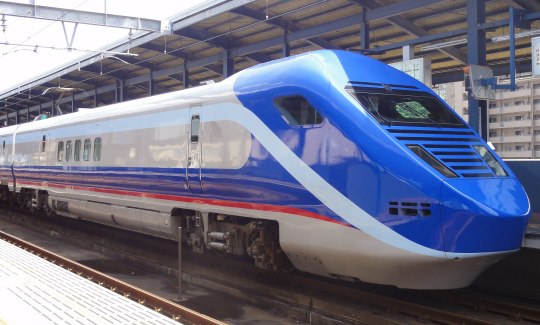
The GTC is the project name for this experimental shinkansen. The one in the picture is the GTC-01, the second generation of its kind (as this is the version they would be testing before and during the development of the game, there is now a 3rd generation.) So, the term gauge refers to the distance between the two rails. Different trains run on different gauges, they can come in either narrow gauge, standard gauge, or wide gauge. Japan's rail network is mostly narrow gauge (specifically Cape Gauge.) The main exception are the shinkansen trains, which run on standard gauge. This shinkansen like the description says would be able to run on any gauge. It used to be under a lot of testing by the Free Gauge Train Technology Research Association. Today though, the GTC-01 second generation sits on display in the Shikoku Railway Heritage Museum.
There are a lot of challenges that the GTC faces. It takes a bit of time for the wheels to adjust to the gauge and you need to go slower when it's doing so. It has increased maintenance costs. The heavier specialized bogie creates more wear on the rails as well as making the train harder to detect. (Ok! Basic explanation for Railway Signaling! Tracks are split up into sections called "blocks", and a small electrical current is run between the two tracks that makes up the block. When a train runs through, the wheel and axle of the train disrupts the current, which then the system detects that block as being occupied by a train. If it is occupied, the signal lights at the end of the block will be turned red, preventing other trains from entering the same block, thus preventing collisions. The problem arises in the GTC in that the wheel and the axle are separate, thus something about this is making it hard to detect on the rail.)
With this train being a "gauge change train" it really made me wonder what gauge the Battle Subway trains runs at? I thought maybe standard gauge or maybe even wide gauge because you can only make the train so wide depending on the gauge. And you'd probably want it wider so that there is more room, especially if you are fitting a battle arena in it! However in Japanese the description mentions that "The rails are a little wider on the tracks that run at higher speeds." Which is... exactly how Japanese rail works? So the Battle Subway lines are probably narrow gauge?
Another thing that's interesting about the "Futuristic Train" is the date that it actually shows up. In Anville Town the way that each train shows up is dependent on the last digit of the day of the month, like so:
0- (10th, 20th, and 30th) "Old Train Car"
1- (1st, 11th, 21st, and 31st) Single Train Car
2- (2nd, 12th, and 22nd) Double Train Car
3- (3rd, 13th, and 23rd) Multi Train Car
yada yada you get the point (4- Super Double Train, 5- Super Single Train, 6- Super Multi Train, 7- Anville Town Train, 8- Nothing, 9- Wi-Fi Train)
The only exception is the "Futuristic Train" who will show up ONLY on February 1st, June 12th, October 1st, October 14th, and December 30th, pretty random huh? haha of course not! These dates are dates significant to the History of Japanese Railway/Transportation!
February 1st: The opening of Japan's first electric street car in 1895!
June 12th: The temporary operation of Japan's first passenger railway in 1872!
October 1st: The release of Japan's first Shinkansen, the series 0 in 1964!
October 14th: The official opening of Japan's first passenger railway in 1872, with the first two stations between Shimbashi and Yokohama! This day is also Railway Day in Japan, celebrating this event, Tokyo holds a Railway Festival and train companies like to do events on this day as well!
December 30th: The opening of Japan's first subway line in 1927, The Ginza Line!
Rails, Station Platform, and More Train:

So the Station, there are a few details I can pick up on here!
The type of track that the trains run on (at least in the station) are ballastless tracks! It means the rail is tied directly onto a slab of concrete rather than having ballast hold it up (ballast is that rocky gravel that you often see beneath the tracks.) This type of track is quite expensive to build and makes the place a lot nosier, but it has a lot of advantages! For one, because there is no ballast to maintain, it has lower maintenance cost (ballast must be packed every now and again using a ballast tamping machine. Which lifts the track and jostles the ballast beneath it. Ballast also needs to be replaced after a while because the rocks have to be irregularly shaped for it to work, and natural weathering can make them smooth out.) It is also easier to clean and has a longer lifespan. Because the rail is tied to slabs of concrete the rails are less prone to deformation, which is good! Though it is also that same inflexibility means that it is difficult to change anything about it and takes longer to repair.
Their buffer! (that little black thing at the end of the line, I think it is a buffer?) It doesn't look like that effective of a buffer... The purpose of a buffer is to stop a train if brakes fail. Though this thing seems to be more for the driver telling them where the end is, hence all the, what I presume are, lights. Let's hope they have some sort of other safety system in place (like some sort of Automatic Train Stop system.)
There doesn't seem to be a third rail. I have a feeling that might be because most Japanese railway trains are powered via overhead wire (literally every irl train I have shown is powered this way.) Maybe the Battle Subway trains might be powered via overhead wire? I might be over analyzing here, they might not have thought of modeling such a small detail haha

The train itself has some sort of device on top (that box thing.) I believe it to be some sort of air conditioning unit. Given how each train car has one large unit on top of it, I believe that it uses a centralized cooling system, which means there is one large air conditioning unit. (There are 2 other types, they are distributed cooling which consists of 6-8 small units and centralized distributed which consists of a couple of medium sized units.) Central cooling systems are easier to install and maintain because there is only one unit to worry about.
Signboards:
The Buildings in between routes have a electronic news bulletin board, and depending on which city is connected to it, the news bulletin will give a little flavor text about the city. There's some flavor text about the Battle Subway when it's about Nimbasa City, and it different depending on whether you are playing the first one or the second one, here they are:
BW
"Run and battle! Trains never stop!” Battle Subway in Nimbasa City"
"They say someone who loved battles also happened to be a railway maniac, and thats why we now have the battle subway"
So, this might be a coincidence, but there is an old name that Japanese Train Fans used to call themselves. The name was "Railway Mania" (鉄道マニア direct translation). It was used up until the 1950s. Today it's seen as a derogatory term but it was used very commonly back in its heyday (even more popular than "railfan" apparently.) I think it is kind of interesting that the term "Railway Maniac" was chosen for this flavor text and I wonder if it has anything to do with this old name. However, I say it might just be a coincidence because the term "Maniac" is not unheard of word in Pokemon (Item Maniac, Poke Maniac, Hex Maniac, etc.) But regardless, there's that little fun fact for you!
B2W2
“Get on a train and fight!” Battle Subway in Nimbasa City"
"The energy generated by heated Pokémon battles is the fuel that keeps the Battle Subway running"
I'm going to get a little headcanon-y here. We can interpret this figuratively, as in if there are no battles then its not really a Battle Subway is it? But I think it would be fun to interpret it literally! What if Pokemon Moves could get absorbed somehow to power the Train? And if the Train doesn't need it it could go into the line to power something else in the Subway! I think that would be cool :]
Extra Stuff:
●I think the Battle Subway Map could also be inspired by JR East's rail map, the main reason is the single lines (dark green) which goes in a loop around the Unova Region...

Reminds me of the Yamanote Line (light green) which also goes in a loop connecting a variety of major stations together in Tokyo and is a very very important line!
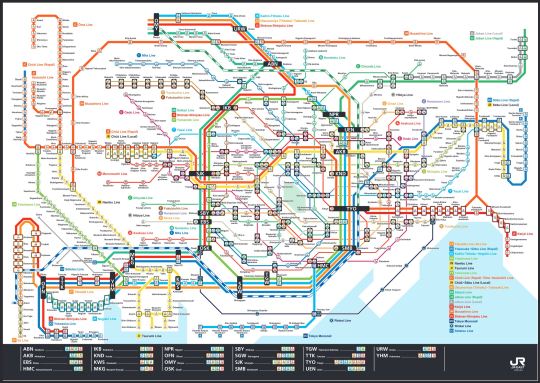
●While I do believe Gear Station is inspired by New York's Grand Central Station, I do think there's a lot of design elements taken from Tokyo Station as well
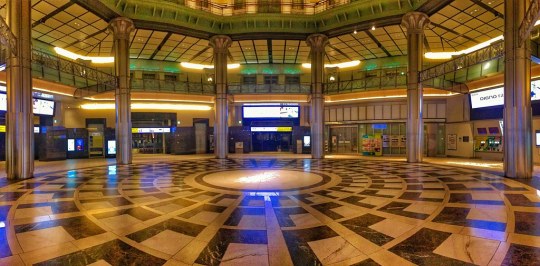
●The gray bodies of the Anville, Single, Doubles, and Multi cars are probably meant to represent an exposed steel/aluminum body rather than the ones painted white like the Super Trains.
●In the Anime, the trains are said to have an ATO system, this is also a real system, it stands for Automatic Train Operation. It's a system that allows a computer to control when the train stops and goes with no driver involved! I don't think that the trains in the games run on an ATO system though, as there are Depot Agents who talk about train driving (Depot Agent Cameron who says "I’m good at driving, but I’m not good at dealing with Pokemon." at the start of battle, and a way more obscure Depot Agent whom you can talk to on the platform after 14 wins on a Super Train who says "I’d rather have an exciting battle than slowly drive the train.")
●In the Anime, there's a stamp rally, which is a real thing! There are station stamps in Japan which tourists can collect. Though, occasionally Pokemon will collaborate with JR East to create a Pokemon Stamp Rally! The most recent is this Pokemon Horizons Stamp Rally promoting the show! Here's a map of what stamps you can collect at each station and the prizes you can get!
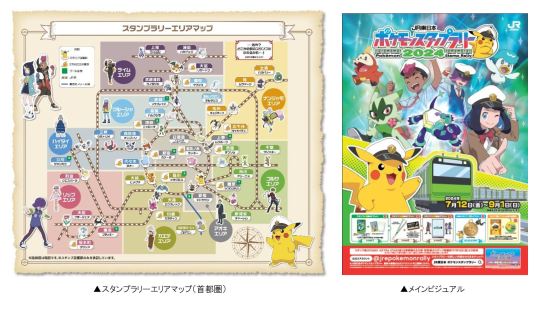
●In the Nacrane city library there is a book that mentions that Nacrane used to have steam locomotives running through it!
"This book is about the things you can ride in the Unova region, such as Castelia City’s cruise ship and Mistralton City’s planes. Before there were planes, locomotives carried people all over Unova. The railway in Nacrene City is a legacy of those lines." (B2W2)
What kinds of Steam Locomotives? I suppose we will never know, as we never see one in game.
●There's an Roughneck NPC you can talk to at Tubeline Bridge in B2W2 where he says
"Watch it! People use “railway fan” as a catchall term, but there are many types of railway fans! There are riding fans, detraining fans, station fans, train-car fans, schedule-table fans, picture-taking fans, recording fans, and more! Don’t go thinking they’re all the same!" (B2W2)
So in Japanese, Railway is Tesudo (鉄道, testu 鉄- Iron and do 道-Road) and a Railway Fan is Tesudofan, however fans will abbreviate to just Testu and stick what aspect of trains they enjoy with it, so like 乗り鉄 (Nori 乗り-Ride, 鉄-tetsu) as a Train Riding Fan, or 撮り鉄 (Tori 撮り-Taking a Picture, 鉄-tetsu) as a Railway Photography fan. There are a lot of these and the NPC does go over some! There's also Railway Modeling Fans (Fans who collect model trains and/or construct model railways), Collecting Fans (Fans who collect railway related items such as tickets or stamps), Operation Fans (Fans who like researching railway operation and equipment), Regulation Fans (Fans who like researching railway handbooks and laws and regulations that go into a railway), Simulation Fans (Fans who like playing train driving/railway management games), Artists/Writers, Urban Explorers, and Railway Preservationist (I gave up on the last ones lol). There are lots of ways to enjoy trains!
There's also the super specific terms of "Mama Tetsu" where a mother becomes a railway fan because of their children's interest or "Oyako Tetsu" where a child becomes interested in trains because of their parents.
●The badge on Ingo and Emmet's hats probably represents the logo for the railway company that they work for, while researching about Japanese Railway Companies, I noticed that they have a lot of circular logos, here's a handful:
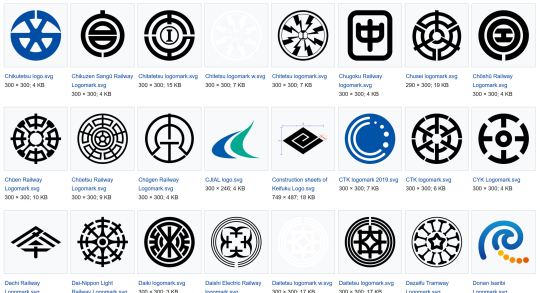
From what I could gather, these types of black and white circular logos are called a mon, kind of like a crest? If you wish to scroll about the logos, here is the link for the Wikimedia commons list.
The company's logo is also what's usually depicted on irl conductor's hats anyways, in the exact same place too.
(I was looking for a screenshot to showcase the hat to put here, but instead I found this promotional video! It's actually pretty good at going over the basics of what a driver and conductor actually do! Please feel free to check it out)
youtube
●The name "Depot Agent" is a little bit of a strange name, in Japanese the name is simply "Railway Worker", a depot is often referred to a train yard, however depot can also refer to a station, given where we see this trainer class working (at Gear Station), it is most likely that the depot in this case is referring to station, so they are station workers!
Final:
After all this I have come to the conclusion that somebody at Gamefreak really liked trains! And I really think all the little details are so awesome! and it really cements the Battle Subway as my favorite battle facility!
Anyways I hope you learned a thing or two and I hope you gained a new appreciation for trains and the Battle Subway! Thanks for Reading! ✌
(If I got anything wrong, please feel free to correct me, there was a lot of information I had to sift through and I am NOT an engineer * _ * and if you have something to add please do! I would love to learn more! ^ ^
2K notes
·
View notes
Text




Still getting used to drawing big cats. Go commission me please!✨
2K notes
·
View notes
Text
grow 256
now with pumpkin season almost coming to an end, the werewolf will start coming back with clearer minds ready for this new Nonstop Nut November, going outside for any reason after dark will get you a belly stuffed with so many pupus/litters,

#growth#jzpart#size growth#transformation#size transforation#giant growth#giant#huge muscle growth#2d animatic#grow#werewolf#werewolf transformation
25 notes
·
View notes
Text
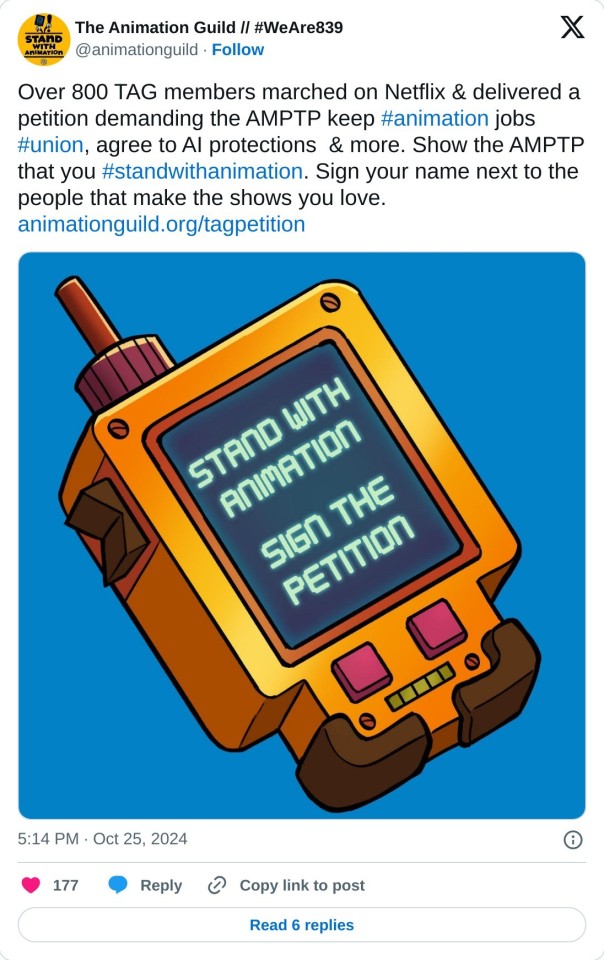
Over 800 TAG members marched on Netflix & delivered a petition demanding the AMPTP keep #animation jobs #union, agree to AI protections & more. Show the AMPTP that you #standwithanimation. Sign your name next to the people that make the shows you love.
17K notes
·
View notes
Text



Record Some pieces I drew last year Bolly the Walrus and Bastian the Sea lion
7K notes
·
View notes
Text
grow 255
Since the werewolves are too busy with the pumpkins... the vampires might take this chance to hunt for prey, some elder vampires tend to hide their true size, to blend in with the humans. this one loves how shocked and impressed humans faces are when they lay their eyes on him. its like you can't look away
( This was an animation for last year's October Didn't really get around finishing it might as well show you what I have )
#growth#jzpart#size growth#transformation#size transforation#giant growth#giant#giant male#huge muscle growth#Vampire
21 notes
·
View notes
Text
i know most people have seen it but i cant emphasize how much this is literally my favorite breath of the wild clip of all time. also i can never fucking find this clip when i need it especially in high definition so here it is
147K notes
·
View notes
Text

drops this to prove im not dead just rlly rlly busy ANYWAYS the post below made me think of my "who framed fizzarolli" au. again. SLAY

4K notes
·
View notes
Text
grow 207
So your experiment didn't go as planned but there were some amazing results, the thing that sucks now is you need to wait until the effects were off, And also need to say hidden from public eye

44 notes
·
View notes








